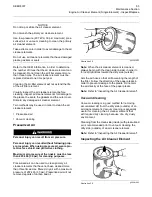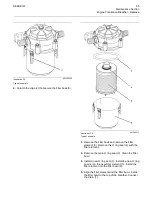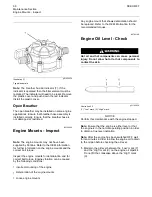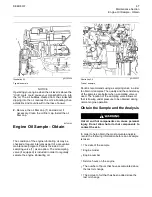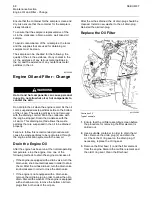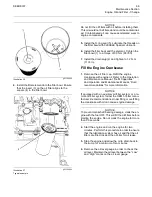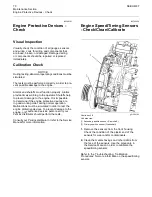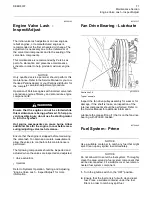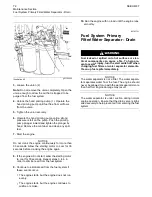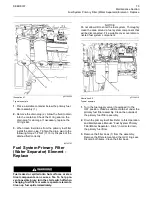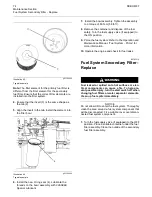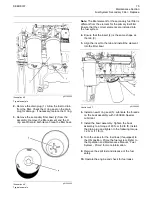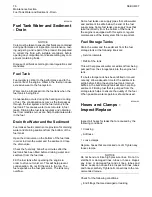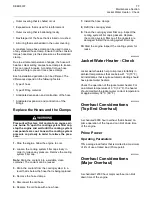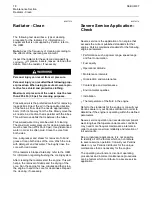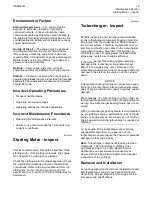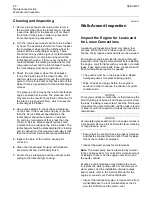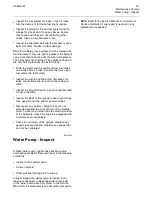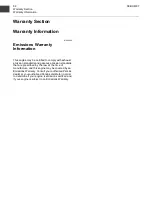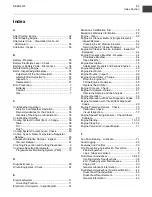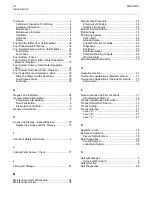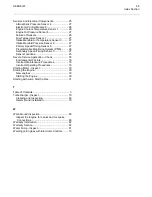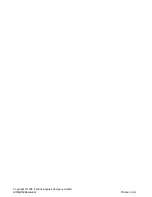
76
SEBU8337
Maintenance Section
Fuel Tank Water and Sediment - Drain
i02568194
Fuel Tank Water and Sediment
- Drain
NOTICE
Care must be taken to ensure that
fl
uids are contained
during performance of inspection, maintenance, test-
ing, adjusting, and repair of the product. Be prepared
to collect the
fl
uid with suitable containers before
opening any compartment or disassembling any com-
ponent containing
fl
uids.
Dispose of all
fl
uids according to local regulations and
mandates.
Fuel Tank
Fuel quality is critical to the performance and to the
service life of the engine. Water in the fuel can cause
excessive wear to the fuel system.
Water can be introduced into the fuel tank when the
fuel tank is being
fi
lled.
Condensation occurs during the heating and cooling
of fuel. The condensation occurs as the fuel passes
through the fuel system and the fuel returns to the
fuel tank. This causes water to accumulate in fuel
tanks. Draining the fuel tank regularly and obtaining
fuel from reliable sources can help to eliminate water
in the fuel.
Drain the Water and the Sediment
Fuel tanks should contain some provision for draining
water and draining sediment from the bottom of the
fuel tanks.
Open the drain valve on the bottom of the fuel tank
in order to drain the water and the sediment. Close
the drain valve.
Check the fuel daily. Allow
fi
ve minutes after the
fuel tank has been
fi
lled before draining water and
sediment from the fuel tank.
Fill the fuel tank after operating the engine in
order to drive out moist air. This will help prevent
condensation. Do not
fi
ll the tank to the top. The
fuel expands as the fuel gets warm. The tank may
over
fl
ow.
Some fuel tanks use supply pipes that allow water
and sediment to settle below the end of the fuel
supply pipe. Some fuel tanks use supply lines that
take fuel directly from the bottom of the tank. If
the engine is equipped with this system, regular
maintenance of the fuel system
fi
lter is important.
Fuel Storage Tanks
Drain the water and the sediment from the fuel
storage tank at the following intervals:
•
Service intervals
•
Re
fi
ll of the tank
This will help prevent water or sediment from being
pumped from the storage tank into the engine fuel
tank.
If a bulk storage tank has been re
fi
lled or moved
recently, allow adequate time for the sediment to
settle before
fi
lling the engine fuel tank. Internal
baf
fl
es in the bulk storage tank will also help trap
sediment. Filtering fuel that is pumped from the
storage tank helps to ensure the quality of the fuel.
When possible, water separators should be used.
i02568190
Hoses and Clamps -
Inspect/Replace
Inspect all hoses for leaks that are caused by the
following conditions:
•
Cracking
•
Softness
•
Loose clamps
Replace hoses that are cracked or soft. Tighten any
loose clamps.
NOTICE
Do not bend or strike high pressure lines. Do not in-
stall bent or damaged lines, tubes or hoses. Repair
any loose or damaged fuel and oil lines, tubes and
hoses. Leaks can cause
fi
res. Inspect all lines, tubes
and hoses carefully. Tighten all connections to the rec-
ommended torque.
Check for the following conditions:
•
End
fi
ttings that are damaged or leaking


